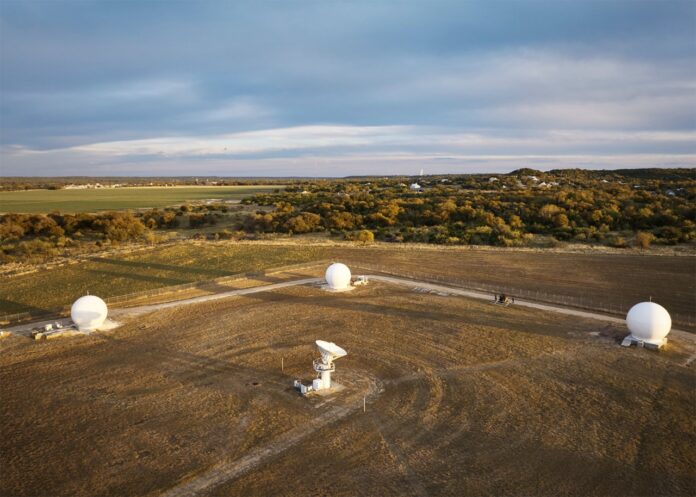The company drew from its Advanced Manufacturing Fund, previously used for R&D investments in Corning and others
Apple’s iPhone 14, introduced in September, is the first iPhone to sport Emergency SOS by satellite functionality. Apple claimed on Thursday that the key feature was made possible because Apple has invested almost half a billion dollars in U.S. infrastructure to make it happen.
Apple announced the iPhone 14 and iPhone 14 Pro at a September event, previewing “Emergency SOS by satellite,” a feature specific to the new handsets that enables users without terrestrial cell coverage or Wi-Fi to contact emergency services. Software included with the phone directs the user to hold the phone in position until it connects to a satellite. The phone sends pre-formatted emergency texts to satellites operating in low Earth orbit (LEO). Messages are relayed to ground-based stations and forwarded to emergency responders, who receive precise location coordinates to dispatch rescuers. The new service debuts in November, and Apple said it will include it for free for the first two years. It will be available in the United States and Canada.
Apple earmarked $450 million from its Advanced Manufacturing Fund to support the introduction of the new feature, the company said in a statement. Most of that money is going to infrastructure improvements at Globalstar, the global satellite service Apple has partnered with to make Emergency SOS by satellite work. The ground stations which receive the satellite signals have been equipped with new high-power antennas made specifically for Apple by Cobham Satcom, a California-based satellite and radio communication hardware manufacturer.
Globalstar operates a constellation of dozens of satellites which it claims can pick up signals from more than 80% of the Earth’s surface. Globalstar touts a second-generation system which works with IP Multimedia Subsystem (IMS). “Globalstar can offer richer and more features to customers, maximize use of satellite technology for optimal user experience, better mobile satellite service throughput for improved data connectivity delivering clear connections on the ground,” Globalstar explained, in content posted on its own web site.
“Apple’s investment provides critical enhancements to Globalstar’s satellite network and ground stations, ensuring iPhone 14 users are able to connect to emergency services when off the grid,” said Apple.
While the iPhone 14 service is limited to North America, Globalstar notes that it operates 24 ground stations spread across six continents. What’s more, Apple said that the newly-designed ground antennas it commissioned from Cobham Satcom were installed at all of Globalstar’s ground stations worldwide, including new stations built in Nevada and Hawaii, as well as existing ones located in Texas, Alaska, Florida and Puerto Rico.
Apple originally announced the creation of the Advanced Manufacturing Fund in 2017. The private equity growth expansion fund was created to invest in domestic job creation, initially seeded with $1 billion. Apple took on the task of creating the fund in light of rising economic nationalism and increased political pressure from U.S. politicians to keep high-paying tech jobs in the United States.
Apple has used the Advanced Manufacturing Fund in the past to bankroll efforts by Corning for R&D associated with the development of glass for Apple products, including the iPhone, Apple Watch and iPad. The company has also paid out money from the funds to Texas-based II-VI (formerly Finisar), a developer of laser technology responsible for some of the gear Apple uses to make Face ID, the facial recognition system built into some of its products. Apple also used Advanced Manufacturing Fund money to create a distribution facility built in Clayton, Indiana, operated by XPO Logistics.
In April 2021, Apple committed $430 billion over five years to investments in the United States. The company projected the investments will yield more than 20,000 new jobs in the U.S. over that period. The $430 billion tops a previous five-year commitment of $350 billion Apple set in 2018. Tens of billions of dollars were earmarked for the development of next-generation silicon and 5G, and more than $1 billion was earmarked for a new Apple campus and engineering hub located in the Research Triangle area of North Carolina.

